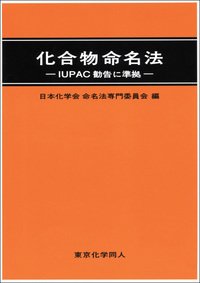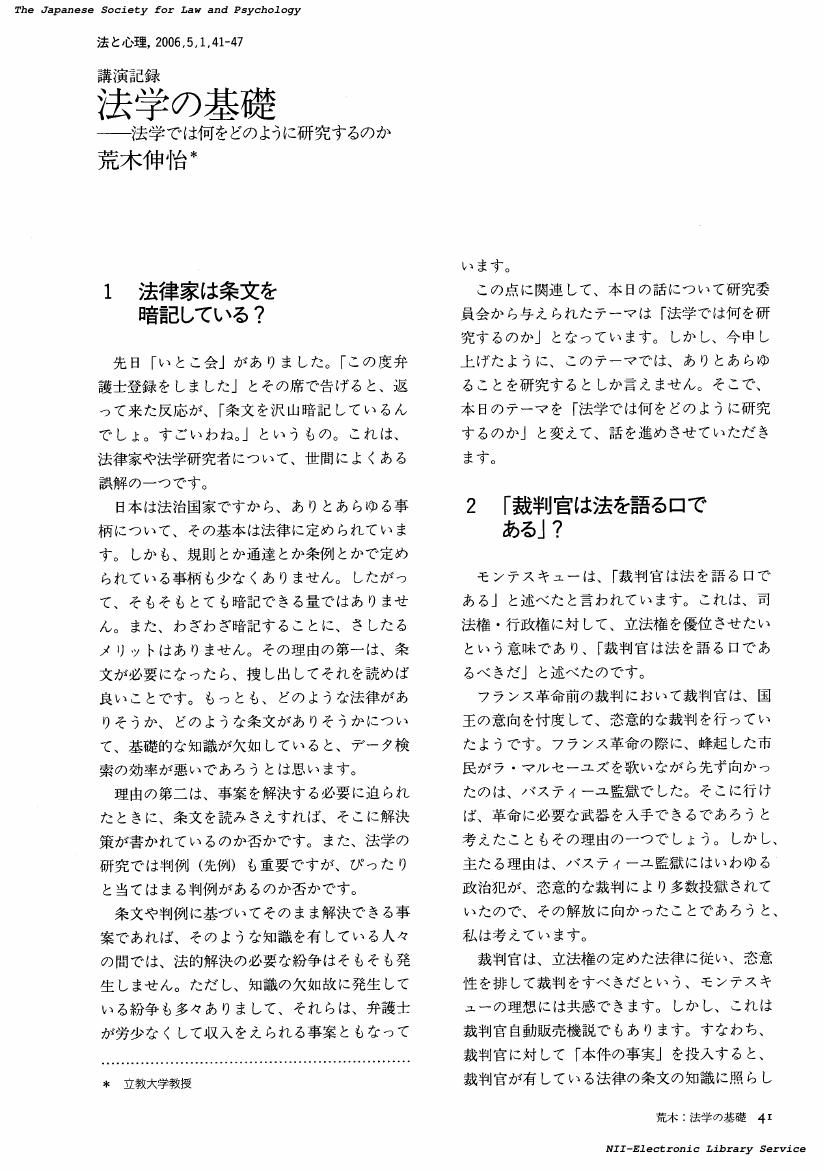2 0 0 0 OA マグマ貫入速度による桜島火山における噴火事象分岐論理
- 著者
- 井口 正人 為栗 健 平林 順一 中道 治久
- 出版者
- 特定非営利活動法人 日本火山学会
- 雑誌
- 火山 (ISSN:04534360)
- 巻号頁・発行日
- vol.64, no.2, pp.33-51, 2019-06-30 (Released:2019-07-06)
- 参考文献数
- 50
In order to find an empirical event branch logic from abnormal phenomena to following volcanic activity for forecasting scale and type of eruption, the magma intrusion rate prior to eruptions of Sakurajima volcano is examined using ground deformation mostly from observation data and partially based on legends, for eruptions after the 20th century: the 1914 eruption starting with plinian eruption followed by effusion of lava, the 1946 eruptions with lava effusion, eruptions at the summit crater of Minamidake during the period from 1955 to 2005, and vulcanian eruptions at Showa crater east of the summit from 2006 to 2017. Prior to the 1914 eruption, it is estimated that the magma intrusion rate attained a level of approximately 108m3/day and was on the order of 106m3/day during the effusion of lava in the 1946 eruption. During the eruptive period of Minamidake summit crater, three types of eruption occurred: vulcanian eruption, strombolian/lava fountain and continuous emission of volcanic ash. In cases of intrusion of magma forming a new conduit, the intrusion rate immediately before the 1914 eruption exceeded 108m3/day, but only 106m3/day in the dyke-forming event of August 15, 2015. Magma intrusion rate into a pre-existing conduit prior to eruptions at Minamidake summit crater are ordered as follows: vulcanian eruption (1×105 to 8×105m3/day)>continuous emission of volcanic ash (approximately 1×105m3/day)>strombolian/lava fountain (0.2×105 to 2×105m3/day). The magma intrusion rate prior to vulcanian eruptions at Showa crater is smaller (approximately 104m3/day) than for eruptions at Minamidake summit crater. However, the rate reached an order of 105m3/day prior to lava fountain on August 22, 2017. Magma intrusion rates well correspond to the scale and type of eruption. In the case of magma intrusion under detection, the change of volcanic gas and increase in the heat discharge rate are available for the empirical event branch logic.
2 0 0 0 岡本かの子『母と娘』 : 密着から自立へ/戦争協力から反戦へ
- 著者
- 近藤 華子
- 出版者
- 日本女子大学
- 雑誌
- 国文目白 (ISSN:03898644)
- 巻号頁・発行日
- vol.51, pp.66-74, 2012-02-28
2 0 0 0 OA 物語を考えるために ―理論的射程―
- 著者
- 生方 智子
- 出版者
- 全国大学国語国文学会
- 雑誌
- 文学・語学 (ISSN:05251850)
- 巻号頁・発行日
- vol.227, pp.2-9, 2019 (Released:2021-01-15)
2 0 0 0 OA 骨系統疾患における画像診断の役割
- 著者
- 宮嵜 治
- 出版者
- 日本小児放射線学会
- 雑誌
- 日本小児放射線学会雑誌 (ISSN:09188487)
- 巻号頁・発行日
- vol.38, no.1, pp.50-59, 2022 (Released:2022-04-15)
- 参考文献数
- 15
骨系統疾患は個々の疾患の疾患は頻度が低いが,これらをすべて集結させた全体の頻度は1,000人に1人と考えられ,ダウン症とほぼ同数で決して稀な疾患ではない.またこれらの診断に有効な診断方法は現在でも単純X線撮影が第一選択である.本稿は骨系統疾患の総論,Bone dysplasia familyの考え方,診断方法の実際を紹介し,各論では骨系統疾患の中のムコ多糖症の読影につきX線所見を解説した.骨系統疾患の大部分は有効な診断・治療法がない難病であるが,治療法のあるモルキオ症候群が日常診療において埋もれていないかを今一度チェックすることが大切である.
2 0 0 0 OA 名古屋における地下街の形成
- 著者
- 戸所 隆
- 出版者
- The Human Geographical Society of Japan
- 雑誌
- 人文地理 (ISSN:00187216)
- 巻号頁・発行日
- vol.31, no.3, pp.193-213, 1979-06-28 (Released:2009-04-28)
- 参考文献数
- 60
- 被引用文献数
- 2 1
Japanese cities have mainly expanded their urban areas horizontally. In recent years, however, drastic vertical integration has occurred through the construction of multistoried buildings, particularly in CBD. In large cities the increase of offices and motor cars has aggravated managerial circumstances of retail in CBD. As a result, underground shopping streets have been constructed as a type of vertical differentiation of urban functions. Connected with the basement of multistoried buildings, they have created new space for retail in CBD.The author investigated underground shopping streets in Nagoya. The main results are summarized as follows:(1) Underground shopping streets in Nagoya were constructed at the traffic junctions namely “Sakae” and “Nagoya-ekimae” (the front area of Nagoya Station), below public roads, simultaneously with the construction of subways. They were connected with the subway stations. This has provided many people with easy access to underground shopping streets, showing rapid development after 1957.(2) The Process of development on underground shopping streets In the first place a group of shops were located along the underground pedestrian passageways which connect subway stations and other means of transport. Then shopping promenades interconnected these areas and the basements of adjacent multistoried buildings. This resulted in the increase of underground space for retail. A further step was taken after 1969. The extension of underground shopping streets was run on such a large scale as over 10, 000 square meters and was linked to the existing underground shopping streets. Thus the enlarged underground shopping streets came to be the central shopping areas of the city.(3) According to the categories of business they contain, underground shopping streets can be classified into two types: one containing many restaurants, coffeehouses and food stores with a choice variety, the other containing many specialty shops dealing in clothes. The underground shopping streets below the front area of Nagoya Station belong to the former type. Those at Sakae district belong to the latter; Sakae has a long prosperous history as a central shopping center of the city.(4) There are many chain stores among shops on underground shopping streets. As their head offices are located in Tokyo, their window decoration and their line of commodities have lost regional characteristics peculiar to Nagoya. This has promoted among people of the city an inclination to the center-oriented fashion and culture.(5) Floor space of a shop on underground shopping streets is rather small compared to that of a shop on ground shopping streets. Because of the favorable location, the rents are very high. Shops on underground shopping streets thus specialize highly in the assortment of goods to attract young customers. Under these circumstances the underground shopping streets cannot raise their importance as central figures in retail of the city without maintaining a strong interdependence with neighboring department stores that aim at a large custom with a rich assortment of goods.(6) There are many branch stores on underground shopping streets and very few shops are run by proprietor in person. Thus underground shopping streets constitute a community of employees. Besides they are doing business with young people as regular customers, there are many young employees accordingly. The underground shopping streets with these young employees thus form a community of tradespeople functioning under the control of their head offices. It affords contrast against the community of merchants heretofore in general in Japan.(7) One of the reasons why underground shopping streets have developed in CBD of large cities in Japan is that there are many people availing themselves of public mass transport and that underground shopping streets have been constructed at its junctions.
2 0 0 0 川端康成『雪国』成立論 : 「徒労」までの経緯をめぐって
- 著者
- 藤板 朋代
- 出版者
- 神戸大学
- 雑誌
- 国文学研究ノート (ISSN:03858189)
- 巻号頁・発行日
- no.52, pp.39-53, 2014-03-31
2 0 0 0 IR 翻字『隠秘録』
- 著者
- 藤沢 毅
- 出版者
- 尾道大学芸術文化学部
- 雑誌
- 尾道大学芸術文化学部紀要 (ISSN:13471910)
- 巻号頁・発行日
- no.7, pp.23-41, 2007
日本文学科
2 0 0 0 物語の断片への回帰--三島由紀夫『天人五衰』
- 著者
- 山崎 義光
- 出版者
- 日本文芸研究会
- 雑誌
- 文芸研究 (ISSN:02875829)
- 巻号頁・発行日
- vol.153, pp.76-87, 2002-03
2 0 0 0 OA 民族身分の戦略的利用 ―四川省黒水県黒水チベット族の観光開発を事例として―
- 著者
- 孫 文 WEN SUN
- 出版者
- 総合研究大学院大学文化科学研究科 / 葉山町(神奈川県)
- 雑誌
- 総研大文化科学研究 = SOKENDAI Review of Cultural and Social Studies (ISSN:1883096X)
- 巻号頁・発行日
- no.19, pp.240(21)-216(45), 2023-03-31
2008年「5・12 汶川大震災」の発生により、中国四川省の西北部の少数民族地域では甚大な被害を受けた。筆者は2010年から、四川大地震後の復興をテーマとして被災地黒水県のチベット族の調査を始めた。長期間のフィールドワークを通じて、災害の復旧だけではなく、2013年以降の貧困削減計画によって、調査対象の黒水チベット族の日常生活が激しく変化している一方で、彼ら自身の民族意識の表明が顕在化していることが明らかになった。その理由として、経済成長の手段として観光事業が推進され、少数民族文化の資源化が進んでいることが考えられる。しかし政治的には中華民族という国民統合のイデオロギーが強化されているという現実がある。本論文の目的は、このような状況下に、黒水チベット族というチベット族のサブグループが、観光開発を契機に、自身の民族身分をいかに戦略的に用いているかを明らかにすることである。 本研究は、まず中国の少数民族の開発に関する「脱政治化」論とその反論を紹介し、本論文の理論的関心を示す。次に、研究対象としての黒水チベット族の民族的帰属に関する歴史的、文化的特徴について述べ、なぜ黒水チベット族を研究対象にするのかを論じる。そして、現在の観光開発に焦点を移し、黒水チベット族の観光村である羊茸と、黒水県の紅色観光を事例に、黒水チベット族の民族身分の戦略を明らかにする。最後に、黒水チベット族は民族身分を戦略的に利用して、開発に参加する政治的正当性、民族文化の真正性、国家統合のイデオロギーへの参入を確保しようとしていると結論する。The May 12 Wenchuan Earthquake in 2008 caused enormous damage in the ethnic minority areas in the northwestern part of China’s Sichuan Province. The author started research in 2010 on the Tibetan people in the disaster-affected area of Heishui County with a focus on reconstruction after the Sichuan Earthquake. Through an extensive period of fieldwork, it became clear that in addition to recovery from the disaster, but also a poverty alleviation program implemented since 2013 have resulted in a drastic changes in the daily lives of the Heishui Tibetans, while their own expression of ethnic awareness has become more apparent. One of the reasons for this may be attributable to the promotion of tourism as a means of economic growth, transforming the ethnic minority culture into a resource. At the same time, however, the reality is that the ideology of national unity of the Chinese nation is being strengthened. The purpose of this study is to clarify how the Heishui Tibetans, a sub-group of the Tibetan ethnic group, use their own ethnic status strategically with tourism development as momentum.The author first introduces the “depoliticization” theory of the development of China’s ethnic minorities and its counterarguments to demonstrate the theoretical interest of this paper, followed by a discussion of the historical and cultural context of the complex ethnic affiliations of the Heishui Tibetan people and the basis for focusing the Heishui Tibetans. Shifting the focus to current tourism development, this study then clarifies the strategic use of the ethnic status of the Heishui Tibetan people by referring to case studies of Yangrong, a tourist village, and Red tourism in Heishui County. Finally, the author concludes that the Heishui Tibetan people strategically use their ethnic status to secure political legitimacy so that they can participate in development, demonstrate the authenticity of their ethnic culture, and take part in the ideology of national unity.
2 0 0 0 化合物命名法 : IUPAC勧告に準拠
- 著者
- 日本化学会命名法専門委員会編
- 出版者
- 東京化学同人
- 巻号頁・発行日
- 2011
- 著者
- 高橋 昌子
- 出版者
- 日本キリスト教文学会
- 雑誌
- キリスト教文学研究 (ISSN:09130047)
- 巻号頁・発行日
- no.22, pp.57-63, 2005
2 0 0 0 OA 法学の基礎 : 法学では何をどのように研究するのか(法と心理学会第5回大会講演記録)
- 著者
- 荒木 伸恰
- 出版者
- 法と心理学会
- 雑誌
- 法と心理 (ISSN:13468669)
- 巻号頁・発行日
- vol.5, no.1, pp.41-47, 2006 (Released:2017-06-02)
- 著者
- Takashi Hayashi
- 出版者
- The Japanese Society for Mathematical Economics
- 雑誌
- 数理経済学会誌 (ISSN:24363162)
- 巻号頁・発行日
- vol.2, pp.1-10, 2023 (Released:2023-03-31)
- 参考文献数
- 24
This paper studies how society should be risk-averse accordingly to how individuals are risk-averse. We consider two axioms, one that if everybody prefers one risky prospect over another so should the society, the other that if everybody is more risk-averse so should the society. We show that the two axioms imply dictatorship, in the sense that the social ranking over risky prospects has to be always identical with one individual's risk preference in each equivalence class of risk preferences which yield the same profile of ordinal preferences over deterministic outcomes.
2 0 0 0 OA 市販こんにゃくの品質調査
- 著者
- 土屋 房江 倉田 美恵 辻 祥子 奥山 清美 塩田 芳之
- 出版者
- The Japan Society of Home Economics
- 雑誌
- 家政学雑誌 (ISSN:04499069)
- 巻号頁・発行日
- vol.32, no.2, pp.145-149, 1981-02-20 (Released:2010-03-10)
- 参考文献数
- 4
1) 岡山県ではこんにゃく業者の8割弱, 広島県では7割強が地域食品認証制度に加入しているが, その製品すべてに認証マークをつけているわけではない. 製造年月日は購入したこんにゃくの35.4%しか表示されておらず, 製造業者名その他まったく表示のないものが65点中2 点あり改善の必要があると思われる.2) 価格は100g当たり17.7~54.7円, 平均27.4円で同じ製品が商店により65円および100円で売られていた例があった.3) 板こんにゃくでは長方形および正方形があり, 玉こんにゃくは形, 大きさがさまざまで, 1袋中のこんにゃく重量は 201~250gのものが最も多かったが表示重量より少ないものが7割強もあった. 注入液は 4~350mlで大部分ヒートシールされていたが, 上部を結んだもの, 輪ゴム止めのものもあった.4) 水分97~98%, 灰分0.2~0.3%, カルシウム60~70mg%, pH10.8~11.2の範囲のこんにゃくが最も多かった.5) 物性は製造業者により, また, 部位によっても異なるものがあり, 原料や製法の違い, こんにゃく糊の調製の仕方, 凝固剤の加え方等の違いによるものと思われる.6) 10%食塩水中で3時間加熱することにより, 水分は平均9.0%減少, pH は平均約1.6低下, カルシウム含量は平均約1/2に減少した. 硬さ, 破断力は増したが部位によるばらつきが大となった. また試食の結果, 物性値の中間のものが好まれた.
2 0 0 0 志賀直哉『城の崎にて』論--<偶然>として語ることについて
- 著者
- Aeo Yeun-Kyung
- 出版者
- 国学院大学大学院
- 雑誌
- 国学院大学大学院紀要 文学研究科 (ISSN:03889629)
- 巻号頁・発行日
- vol.36, pp.249-263, 2004
2 0 0 0 OA 死の表現者 ―モーリス・ブランショの芸術論―
- 著者
- 小原 拓磨
- 巻号頁・発行日
- 2018-05-01
- 著者
- 小森 陽一
- 出版者
- 学灯社
- 雑誌
- 国文学 解釈と教材の研究 (ISSN:04523016)
- 巻号頁・発行日
- vol.33, no.4, pp.p36-39, 1988-03
2 0 0 0 OA 日本におけるグリム童話の受容と変容
- 著者
- 須田 康之
- 出版者
- 日本教育社会学会
- 雑誌
- 教育社会学研究 (ISSN:03873145)
- 巻号頁・発行日
- vol.49, pp.117-134, 1991-10-20 (Released:2011-03-18)
- 参考文献数
- 39
2 0 0 0 IR 強敵としての〈太宰治〉 : 『親友交歓』を読む
- 著者
- 斎藤 理生 サイトウ マサオ
- 出版者
- 東京法令出版
- 雑誌
- 月刊国語教育 (ISSN:02857103)
- 巻号頁・発行日
- vol.29, no.11, pp.58-61, 2010-01


